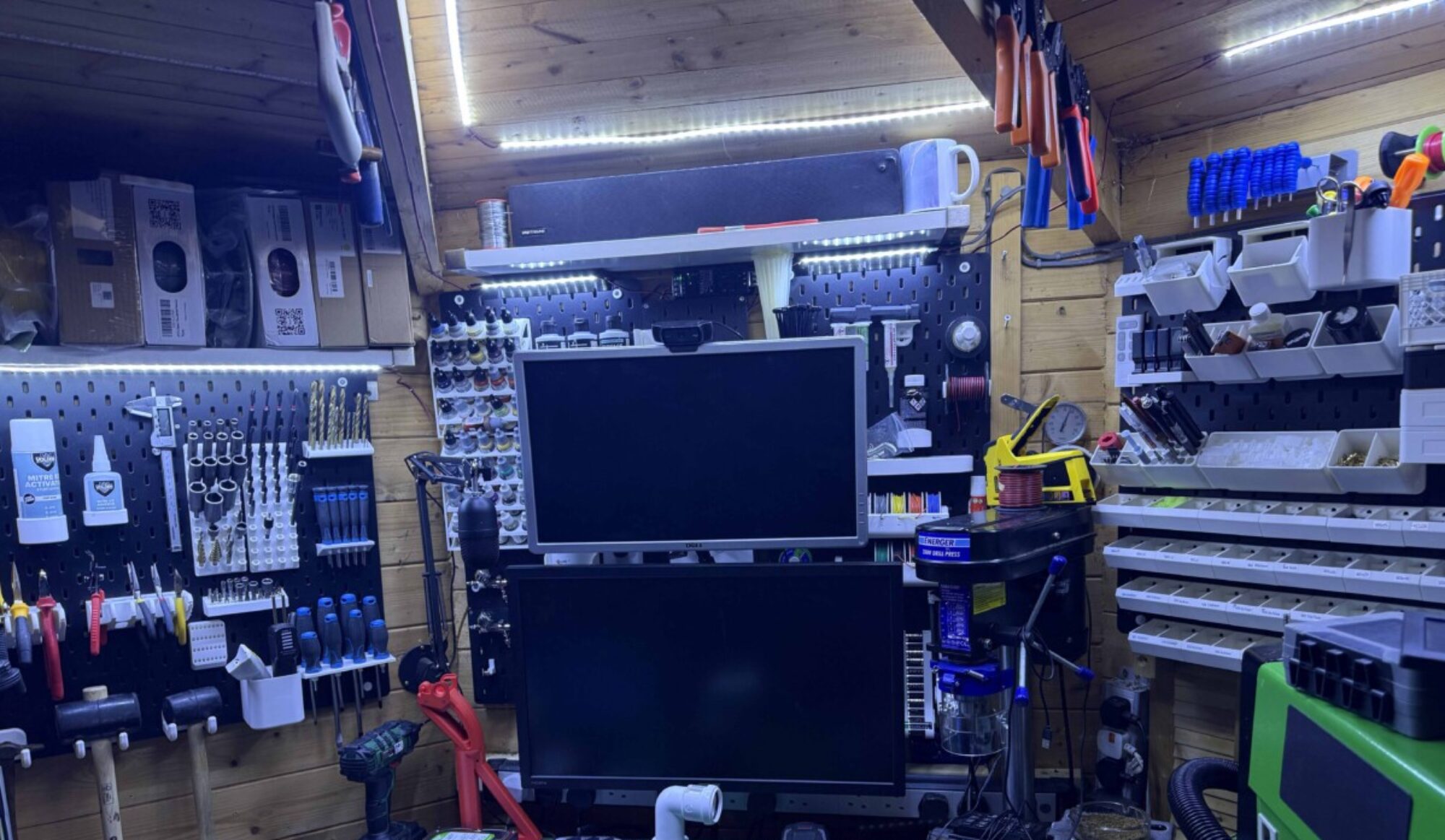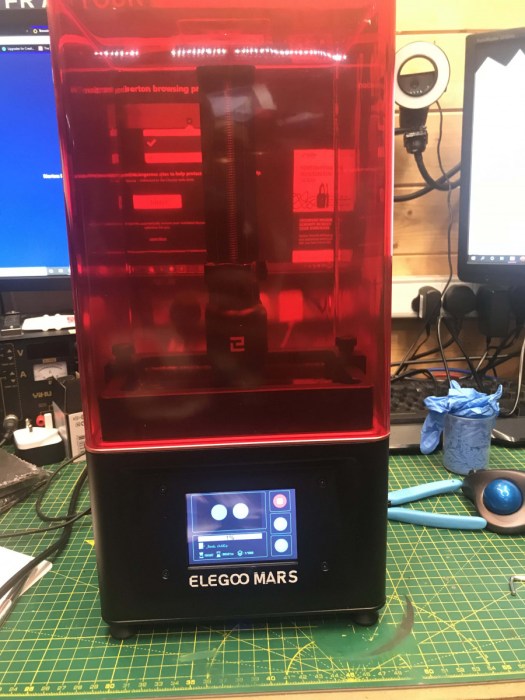I have wanted a Co2 Laser for some time for the man cave as it’s a useful bit of kit. For engraving and cutting materials.
I got a great deal on what is known as a K40 laser these lasers are from china so don’t expect good quality. If you do your research, you will know what you’re getting in to before you buy.
It arrived. Well packed in massive 42kg box.
What was in the box.
1 x k40 laser cutter.
1 x extraction fan. (rubbish Quality binning and upgrading)
1 x extraction tube. (rubbish Quality binning and upgrading)
1 x water pump. (rubbish Quality binning and upgrading)
1 x usb dongle. (Never used as didn’t use the supplied software)
1 x cd with Chinese cutting software. (Never used as didn’t use the supplied software)
1 x tube of something think its silicon
1 x double sided tape. (meant for mirror alignment)
What you will need to get this working is a bucket and some distilled water as you will need to keep the laser water cooled.
The setup.
You will need at least 5L of distilled water connect pump to water inlet tube and place in bucket with distilled water place the out let tube in there as well. the pump is rubbish some times works some times does not so have to tap it with something heavy.
Install extractor fan and attach extraction tube. again rubbish will need to be upgraded will cover this in a later post once have printed a new exhaust adapter
There is a earth connection that I didn’t use as being in the uk our plugs are earthed.
Then plug it all and switch on.
Make sure you set the dial down before testing the laser as up can possibly blow the laser tube.
Placed some plywood down and hit the test button the gauge registered 5ish mA lifted the lid nothing no marks on the wood. Left lid open and did it again saw the glow of the tube. So knew it was working.
Figured the mirrors were not aligned. Spent the best part of an hour looking at youtube videos and webs sights that all talk about adjusting mirrors but don’t talk about what screw does what.
I decided to sleep on it oh and a have baby. A month later having some man time as wife was away with our son. I came back from a few days working in Amsterdam to the house I decided to bring the laser in the house and work on it as the cave is cramped to work on big stuff. After 40 mins with the aid of some 3d printed parts I got the lens and mirrors aligned at last. Link to 3d printed parts off thingiverse.com. i also brought and added a 3d printed air-assist and laser pointer for showing were laser was pointing at on the materal got this off ebay.

Moved the laser back to the cave and ready to action.
Now I bypassed the Chinese software as had been able to do some research on the machine. I had invested in a 3d printed air assist and laser maker. I also had installed k40 whisper instead of the hacked version coral draw and coral laser.
Cuts and engraves like a dream. Well worth the money.
The future modifications.
As someone who like perfection I have dumped some money on my machine and over the next few months. I will be upgrading the machine.
List of upgrades
New mirrors all around as the quality of the Chinese mirrors are ok but not the best quality. (Done)
New light object air assist and cutting head and cutting lens. (Done)
New Control panel for more functions.
Adding Motorised adjustable bed (Built) wiring loom and board upgrade first.
3d Printed exhaust vent
New exhaust fan
New water cooler pump
Adding Flow and water temp meter.
New controller board and software.
Adding lcd screen
This will be done over the next few months as have limited amount time as family time comes first.
Like this:
Like Loading...
















































You must be logged in to post a comment.